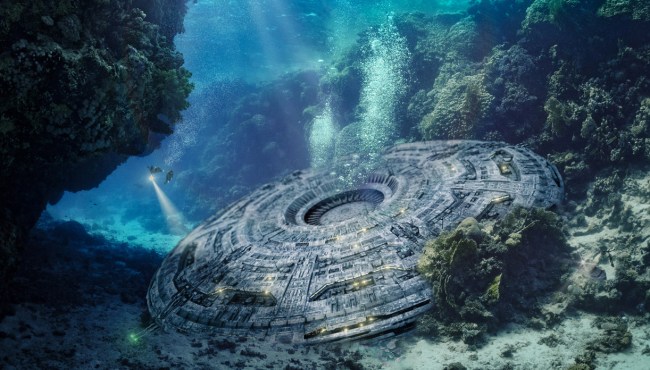
iStockphoto
Astrophysicist Avi Loeb, chairman of Harvard’s Department of Astronomy from 2011 to 2020, is currently on a reported $1.5 million expedition to determine if a meteor that crashed into the southwestern Pacific Ocean in 2014 is actually UFO crash debris and alien in nature.
Loeb and his team are searching the floor of the Pacific Ocean for debris from IM1 – a interstellar meteor that exploded and crashed into the waters about 100 miles off the coast of Papua New Guinea.
The space rock, which was moving through space at 130,000 MPH, is just the third known interstellar object to have made contact with Earth.
Last week, Loeb and his team of researchers discovered small metallic wires that Loeb says were “anomalous compared to human-made alloys.”
This week, the renowned astronomer reported in his journal that they had discovered 50 microscopic spherules so small they can only be viewed through a microscope.
Using an X-ray Fluorescence analyzer, Loeb writes, “We found a composition of mostly iron with some magnesium and titanium but no nickel. This composition is anomalous compared to human-made alloys, known asteroids and familiar astrophysical sources.”
“This could be the first time humans put their hands on interstellar material,” Loeb told Fox News. “This has never been done before. We never received a package at our doorstep from a cosmic neighbor.”
Loeb says the microscopic spherules only appeared along the trajectory of the meteor’s path.
“Finding more spherules will allow us to pinpoint the meteor path and potentially seek a large object that may represent its core at the end of the path,” Loeb wrote. “If such an object is retrieved, its structure could inform us of its technological purpose and design.”
Loeb added, “We are now on our way back to IM1’s crash site in an attempt to retrieve as many spherules as possible. With a large enough sample, we can obtain a gamma-ray spectrum that will characterize its radioactive elements and potentially date the sample.
“Constraining the travel time might allow us to identify the distance and direction of its source star given its known velocity.
“Our preliminary analysis implies that the composition of mostly iron with a tenth of that in magnesium and some titanium does not resemble known human-made alloys or familiar asteroids.
“The fundamental question is obvious: was this first recognized interstellar object from 2014 manufactured by a technological civilization?”